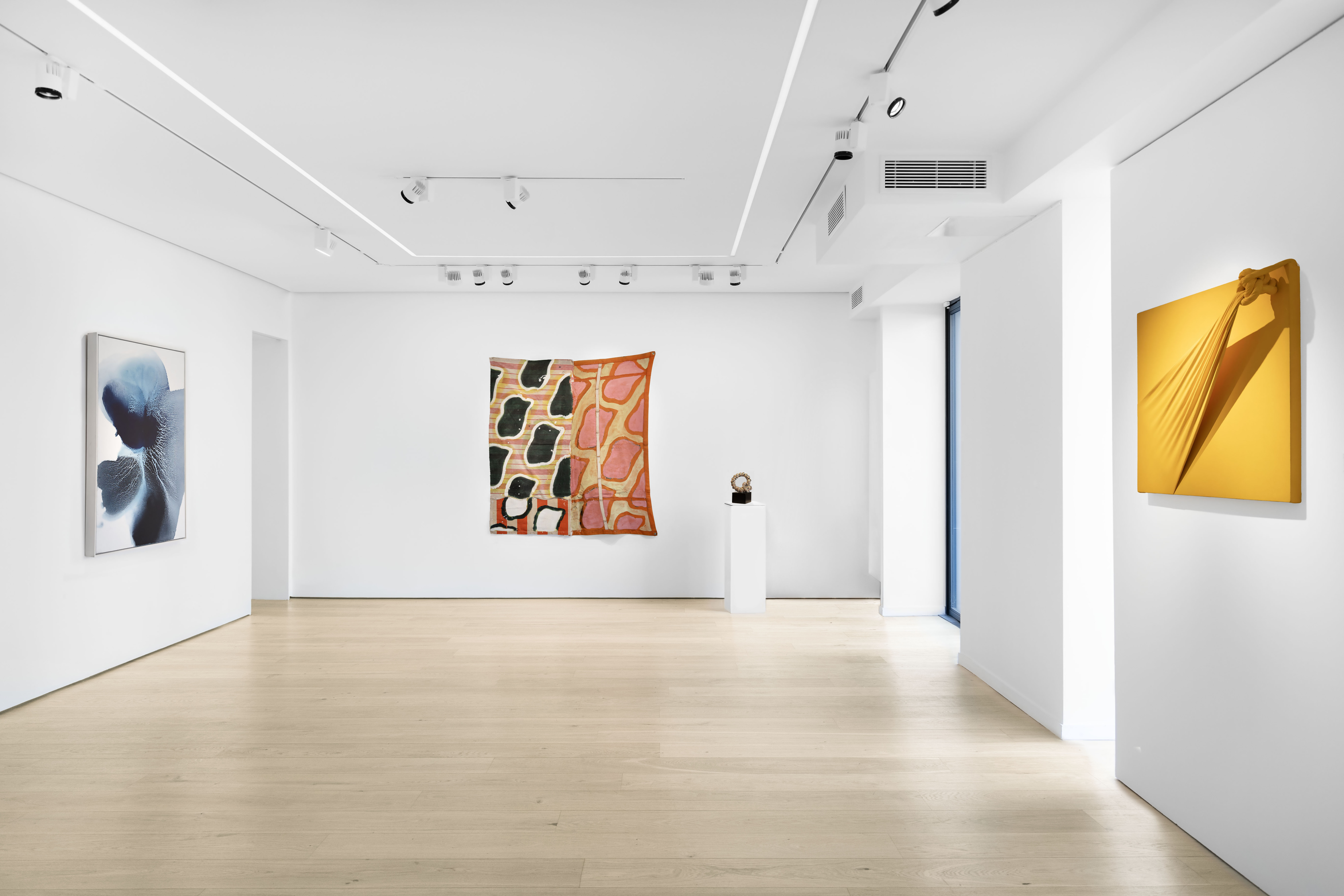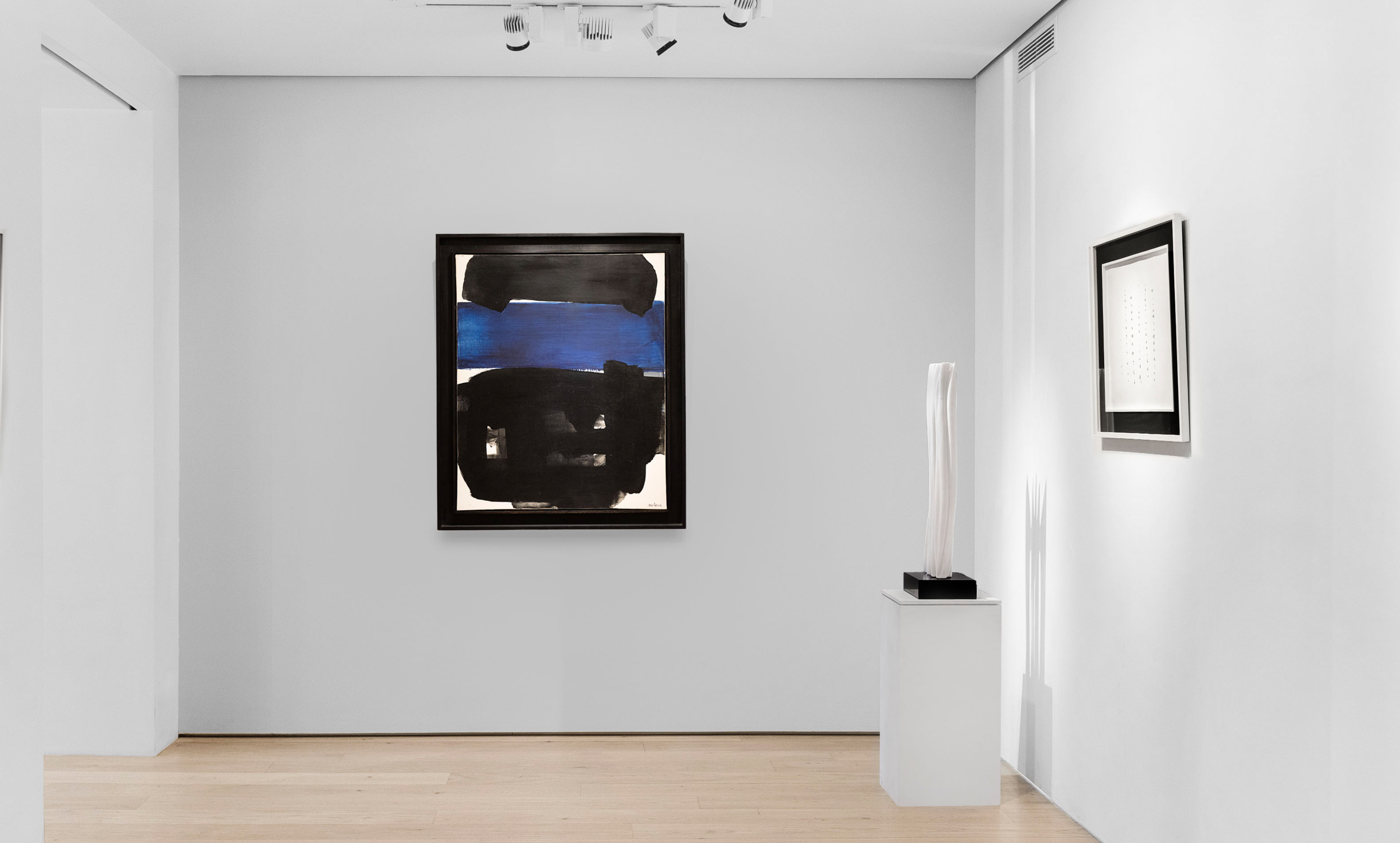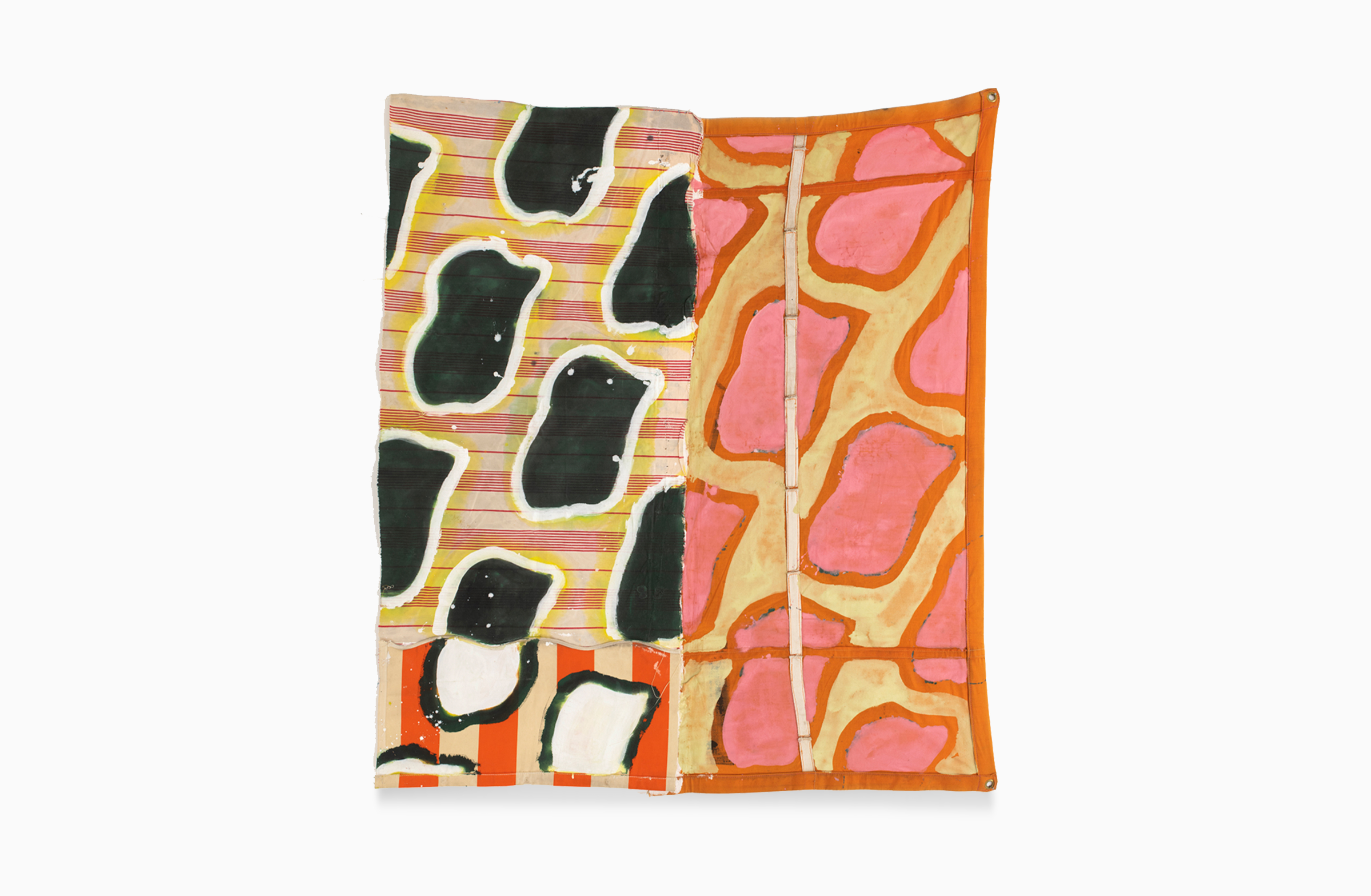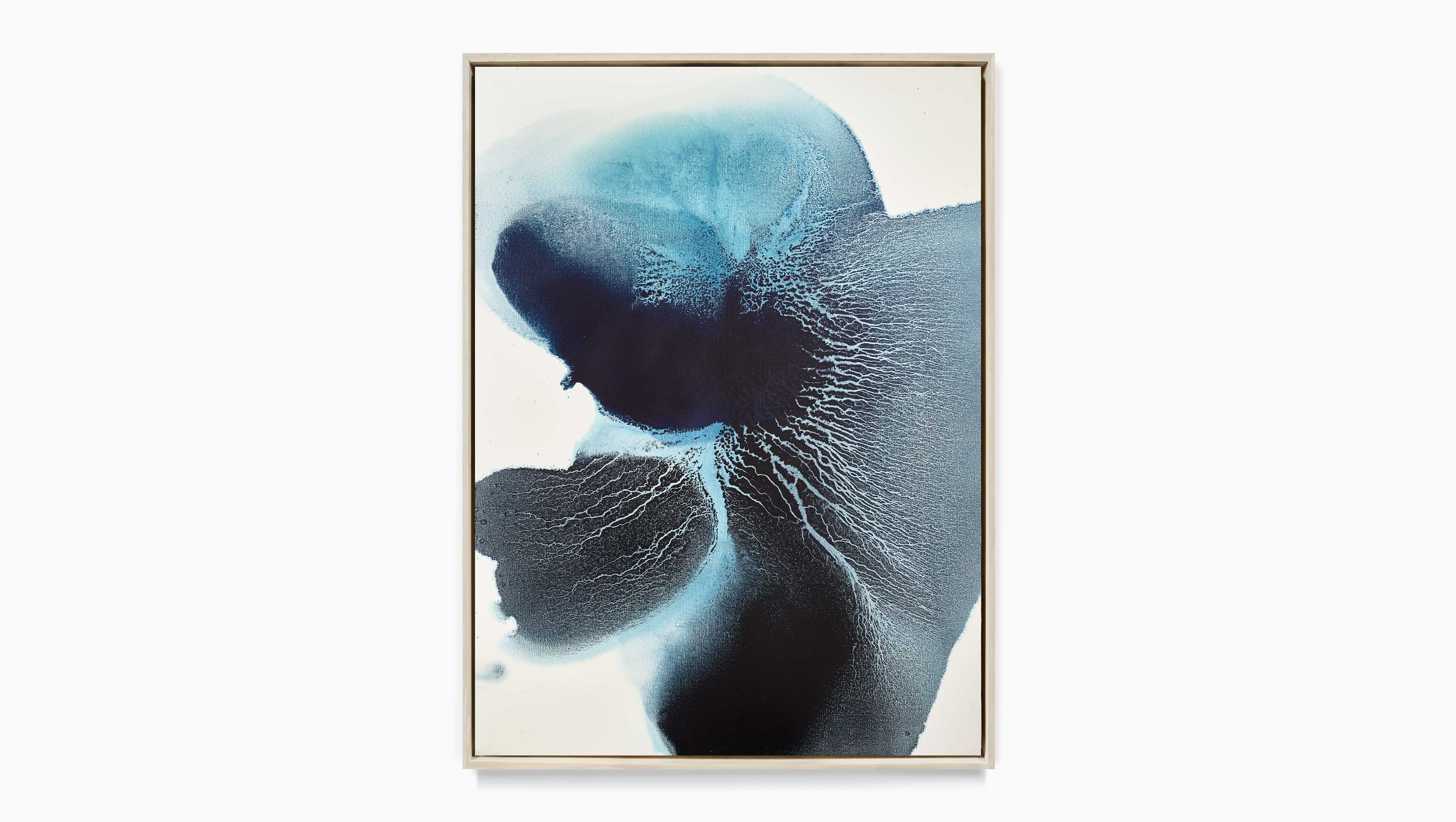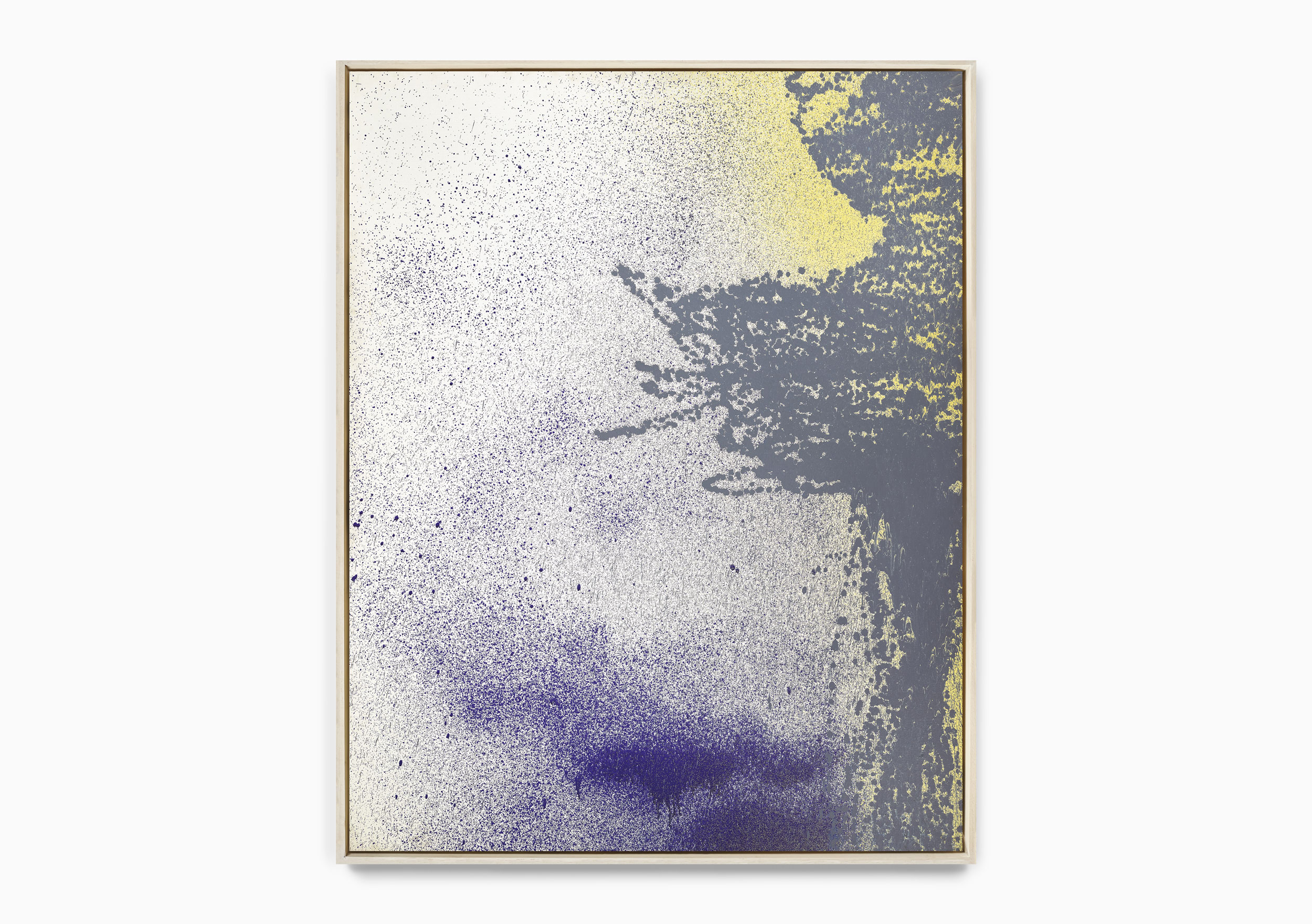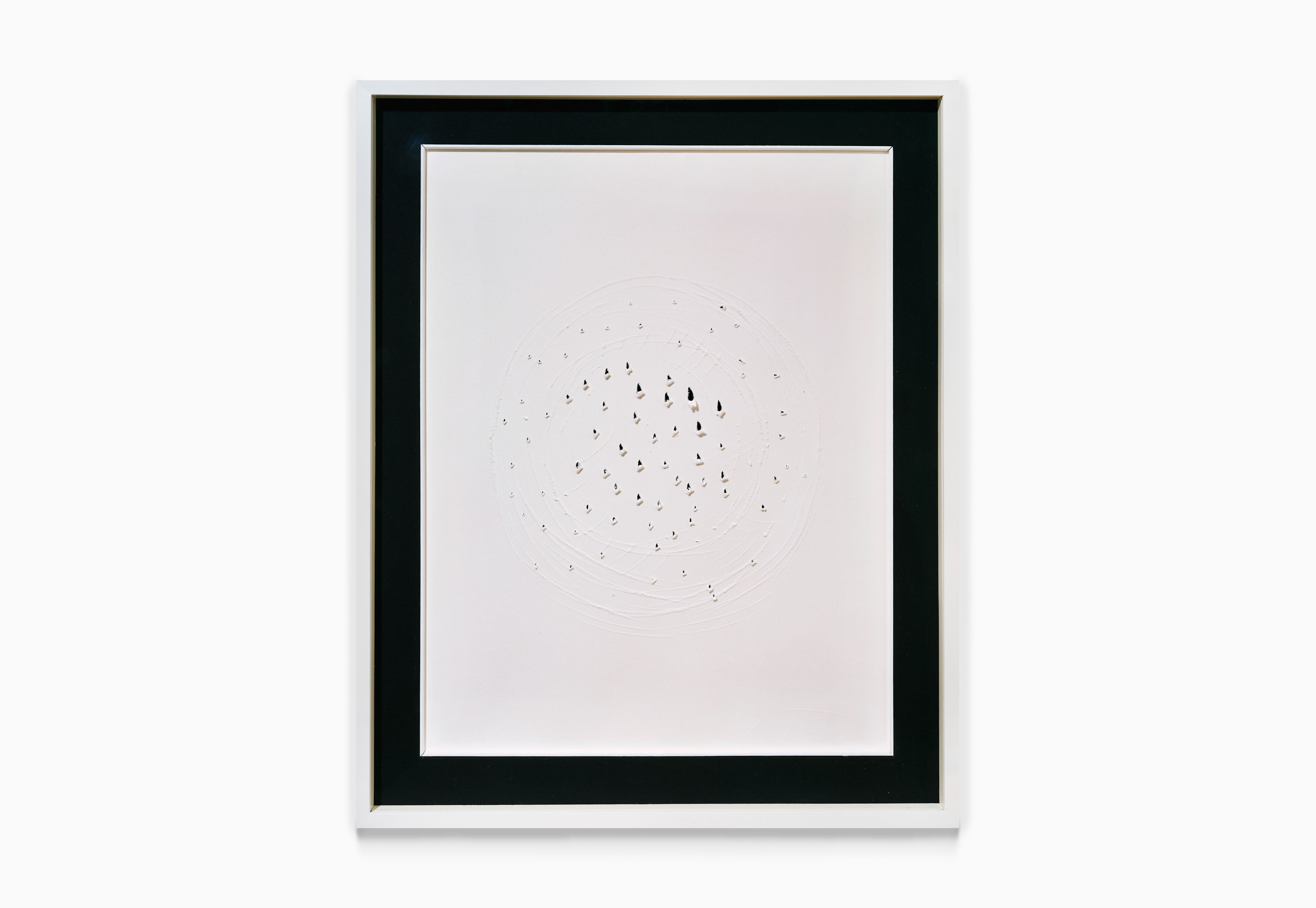In this exhibition, gesture does not disappear in the moment: it is inscribed, repeated and transformed. For Claude Viallat, repetition becomes a visual practice in which memory takes shape. He rejects the pictorial hierarchy between form and substance. The organic motif, osselets, is applied ad infinitum, but always with slight variations to become imprints of the artist, anchored in Sans titre (n°1bis), 1997. Each mutation is a marker of the passage of time: from the relationship to the body, to the living, to the wear and tear of his stamps. In the work of Jorge Eielson and Simon Hantaï, the plastic process registers an inner temporality. The canvas becomes a memory of a past gesture. The work reveals itself in the unfolding or knotting.
Here, paint fades away to allow form to emerge, and what remains is the culmination of a silent but powerful act.

